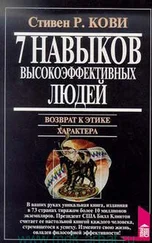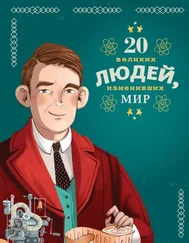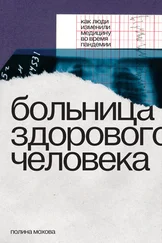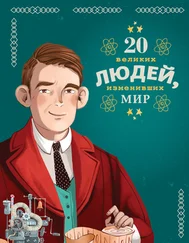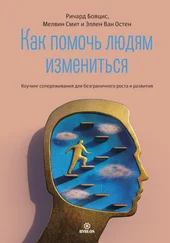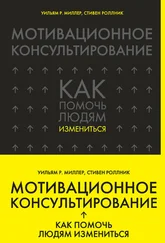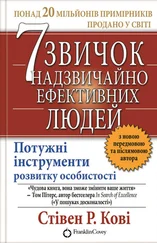Nouwen, H. J. M. (2005). In memoriam. Notre Dame, IN: Ave Maria Press.
Nowinski, J., Baker, S., & Carroll, K. M. (1992). Twelve step facilitation therapy manual: A clinical research guide for therapists treating individuals with alcohol abuse and dependence. Rockville, MD: National Institute on Alcohol Abuse and Alcoholism.
Nuro, K. F., Maccarelli, L., Baker, S. M., Martino, S., Rounsaville, B. J., & Carroll, K. M. (2005). Yale Adherence and Competence Scale (YACS II) guidelines (2nd ed.). West Haven, CT: Yale University Press.
O’Leary, C. C. (2001, January). The early childhood family check-up: A brief intervention for at-risk families with preschool-aged children. Dissertation Abstracts International: Section B: The Sciences and Engineering, 62 (6–B), 2992.
Olsen, S., Smith, S. S., Oei, T. P., & Douglas, J. (2012). Motivational interviewing (MINT) improves continuous positive airway pressure (CPAP) acceptance and adherence: A randomized clinical trial. Journal of Consulting and Clinical Psychology, 80(1), 151–163.
Ondersma, S. J., Chase, S. K., Svikis, D. S., & Schuster, C. R. (2005). Computer– based brief motivational intervention for perinatal drug use. Journal of Substance Abuse Treatment, 28(4), 305–312.
Ondersma, S. J., Svikis, D. S., & Schuster, C. R. (2007). Computer-based brief intervention a randomized trial with postpartum women. American Journal of Preventive Medicine, 32(3), 231–238.
Ondersma, S. J., Winhusen, T., Erickson, S. J., Stine, S. M., & Wang, Y. (2009).
Motivation enhancement therapy with pregnant substance-abusing women: Does baseline motivation moderate efficacy? Drug and Alcohol Dependence, 101(1–2), 74–79.
Pantalon, M. V. (2011). Instant influence: How to get anyone to do anything– FAST. New York: Little, Brown.
Parks, G. A., & Woodford, M. S. (2005). CHOICES about alcohol: A brief alcohol abuse prevention and harm reduction program for college students. In G. R. Walz & R. K. Rep (Eds.), Vistas: Compelling perspectives on counseling 2005 (Article 36). Alexandria, VA: American Counseling Association.
Parr, G., Haberstroh, S., & Kottler, J. (2000). Interactive journal writing as an adjunct in group work. Journal for Specialists in Group Work, 25(3), 229242.
Parsons, J. T., Golub, S. A., Rosof, E., & Holder, C. (2007). Motivational interviewing and cognitive-behavioral intervention to improve HIV medication adherence among hazardous drinkers: A randomized controlled trial. Journal of Acquired Immune Deficiency Syndromes, 46(4), 443–450.
Passmore, J. (2007). Addressing deficit performance through coaching: Using motivational interviewing for performance improvement at work. International Coaching Psychology Review, 2(3), 265–275.
Passmore, J., & Whybrow, A. (2008). Motivational interviewing: A specific approach for coaching psychologists. In S. Palmer & A. Whybrow (Eds.), Handbook of coaching psychology: A guide for practitioners (pp. 160–173). New York: Routledge.
Patel, S. H., Lambie, G. W., & Glover, M. M. (2008). Motivational counseling: Implications for counseling male juvenile sex offenders. Journal of Addictions and Offender Counseling, 28(2), 86–100.
Patterson, G. R. (1974). Living with children: New methods for parents and teachers. New York: Research Press.
Patterson, G. R. (1975). Families: Applications of social learning to family life (rev. ed.). New York: Research Press.
Patterson, G. R., & Chamberlain, P. (1994). A functional analysis of resistance during patient training therapy. Clinical Psychology: Science and Practice, 1(1), 53–70.
Patterson, G. R., & Forgatch, M. S. (1985). Therapist behavior as a determinant for client noncompliance: A paradox for the behavior modifier. Journal of Consulting and Clinical Psychology, 53, 846–851.
Pennebaker, J. W. (1997). Writing about emotional experiences as a therapeutic process. Psychological Science, 8 (3), 162–165.
Persson, L.-G., & Hjalmarson, A. (2006). Smoking cessation in patients with diabetes mellitus: Results from a controlled study of an intervention programme in primary healthcare in Sweden. Scandinavian Journal of Primary Health Care, 24(2), 75–80.
Pettinati, H. M., Weiss, R. D., Dundon, W., Miller, W. R., Donovan, D. M., Ernst, D. B., et al. (2005). A structured approach to medical management: A psy– chosocial intervention to support pharmacotherapy in the treatment of alcohol dependence. Journal of Studies on Alcohol and Drugs, Supplement 15, 170–178.
Pierson, H. M., Hayes, S. C., Gifford, E. V., Roget, N., Padilla, M., Bissett, R., et al. (2007). An examination of the Motivational Interviewing Treatment Integrity code. Journal of Substance Abuse Treatment, 32, 11–17.
Polcin, D. L., Galloway, G. P., Palmer, J., & Mains, W. (2004). The case for high– dose motivational enhancement therapy. Substance Use and Misuse, 39(2), 331–343.
Pollak, K. I., Alexander, S. C., Coffman, C. J., Tulsky, J. A., Lyna, P., Dolor, R. J., et al. (2010). Physician communication techniques and weight loss in adults: Project CHAT. American Journal of Preventive Medicine, 39(4), 321–328.
Pollak, K. I., Alexander, S. C., 0stbye, T., Lyna, P., Tulsky, J. A., Dolor, R. J., et al. (2009). Primary care physicians’ discussions of weight-related topics with overweight and obese adolescents: Results from the Teen CHAT Pilot Study. Journal of Adolescent Health, 45(2), 205–207.
Premack, D. (1972). Mechanisms of self-control. In W. A. Hunt (Ed.), Learning mechanisms in smoking (pp. 107–123). Chicago: Aldine.
Prochaska, J. O., & DiClemente, C. C. (1984). The transtheoretical approach: Crossing traditional boundaries of therapy. Homewood, IL: Dow/Jones Irwin.
Proctor, S. L., Cowin, C. J., Hoffmann, N. G., & Allison, S. (2009). A tool to engage jail inmates: A trademarked journaling process shows promise in giving offenders insight on their substance use. Addiction Professional, 7(1), 22–26.
Proctor, S. L., Hoffman, N. G., & Allison, S. (2012). The effectiveness of interactive journaling in reducing recidivism among substance dependent jail inmates. International Journal of Offender Therapy and Comparative Criminology, 56(2), 317–332.
Progoff, I. (1975). At a journal workshop. New York: Dialogue House Library.
Project MATCH Research Group. (1993). Project MATCH: Rationale and methods for a multisite clinical trial matching patients to alcoholism treatment. Alcoholism: Clinical and Experimental Research, 17, 1130–1145.
Project MATCH Research Group. (1997a). Matching alcoholism treatments to client heterogeneity: Project MATCH posttreatment drinking outcomes. Journal of Studies on Alcohol, 58(1), 7–29.
Project MATCH Research Group. (1997b). Project MATCH secondary a priori hypotheses. Addiction, 92, 1671–1698.
Project MATCH Research Group. (1998a). Matching alcoholism treatments to client heterogeneity: Project MATCH three-year drinking outcomes. Alcoholism: Clinical and Experimental Research, 22, 1300–1311.
Project MATCH Research Group. (1998b). Matching alcoholism treatments to client heterogeneity: Treatment main effects and matching effects on drinking during treatment. Journal of Studies on Alcohol, 59(6), 631–639.
Project MATCH Research Group. (1998c). Therapist effects in three treatments for alcohol problems. Psychotherapy Research, 8, 455–474.
Quenk, N. L. (2009). Essentials of the Myers-Briggs Type Indicator assessment (2nd ed.). New York: Wiley.
Rachman, A. W. (1990). Judicious self-disclosure in group analysis. Group, 14(3), 132–144.
Читать дальше
Конец ознакомительного отрывка
Купить книгу



